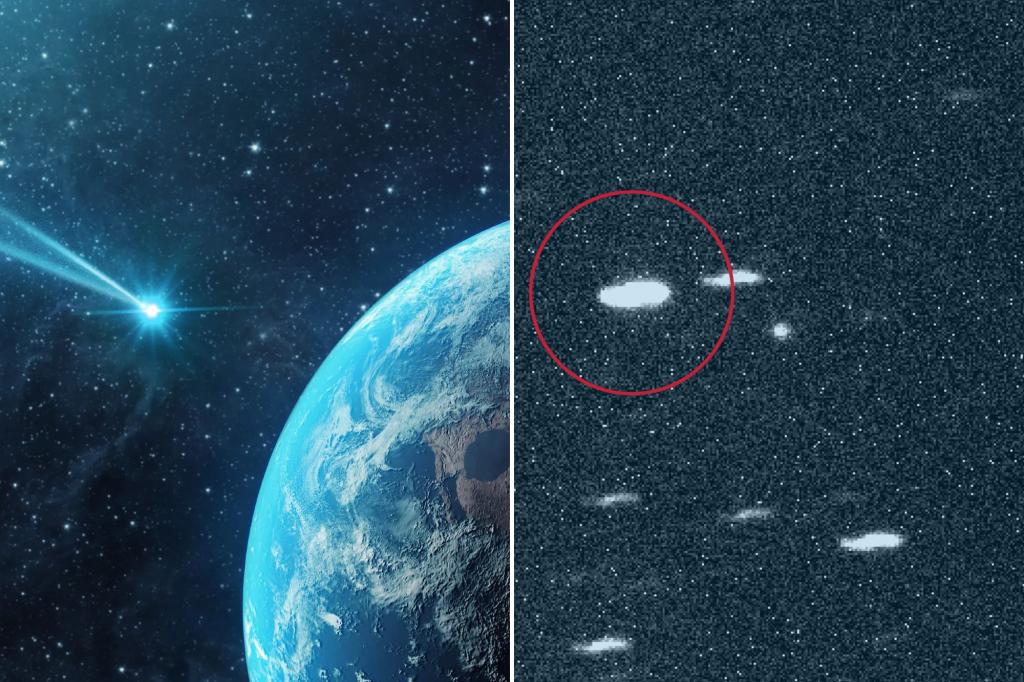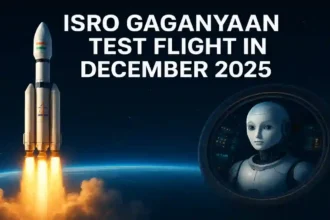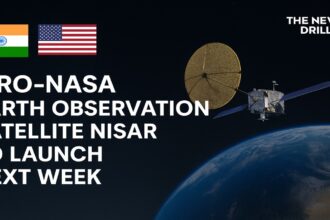A massive interstellar object named 3I/ATLAS is capturing global attention after scientists revealed it is far larger than previously believed and could even be an alien technological artifact. Harvard astrophysicist Avi Loeb and his team, who have been closely monitoring the object since its discovery by NASA on July 1, suggest that this mysterious comet like visitor may change everything we know about the cosmos.

3I/ATLAS: An Interstellar Visitor
The discovery of 3I/ATLAS is groundbreaking because it is only the third known interstellar object to pass through our solar system. The first was the elongated object ‘Oumuamua in 2017, followed by 2I/Borisov in 2019. Both sparked intense debates among scientists about their origins and composition. Now, with the arrival of 3I/ATLAS, researchers have another chance to study material from beyond our solar system.
Unlike typical comets formed within our planetary neighborhood, 3I/ATLAS entered our system from deep interstellar space. Its unusual trajectory, size, and acceleration patterns have made astronomers question whether it is a natural body or something far more advanced.
How Big is 3I/ATLAS?
Initial observations underestimated the size of 3I/ATLAS, but recent research suggests it is enormous. According to Avi Loeb’s calculations, the object’s mass exceeds 33 billion tons, and its nucleus alone measures more than 3.1 miles in diameter. This makes it significantly larger than its predecessors, being “three to five orders of magnitude” more massive than either ‘Oumuamua or 2I/Borisov.
Avi Loeb’s team determined this by examining its gravitational acceleration, which was measured as “smaller than 49 feet per day squared.” By comparing this movement with the amount of gas and dust it was shedding, they were able to estimate its colossal mass.
Could 3I/ATLAS Be Alien Technology?
The most controversial aspect of the 3I/ATLAS discovery is the suggestion that it might not be a typical comet at all. Avi Loeb and his colleagues have raised the hypothesis that 3I/ATLAS could be a technological artifact built by intelligent extraterrestrials.
In a July 17 research paper, Loeb, along with scientists Adam Drowl and Adam Hibberd, argued that the comet like body’s nongravitational acceleration and unusual orbital tilt could be signs of artificial design. Its retrograde spin — the opposite of most solar system objects — may allow it to maneuver freely and even conduct reconnaissance of nearby planets such as Venus, Mars, and Jupiter.
Loeb’s blog further suggested that if 3I/ATLAS is an intelligent probe, it may be collecting astrometric measurements to map planetary orbits and masses. This would, in theory, allow it to plan an “optimal approach strategy” to the solar system.
Rare but Not a Threat to Earth
Despite the sensational headlines, scientists emphasize that 3I/ATLAS poses no direct threat to Earth. Its trajectory, while unusual, will only bring it close to the orbits of Mars, Jupiter, and Venus. In fact, it recently passed within 1.67 million miles of Mars’ orbit around the sun.
Still, its very existence raises intriguing questions. Loeb pointed out that, statistically, astronomers should have detected hundreds of thousands of smaller interstellar objects before spotting something as massive as 3I/ATLAS. The fact that this is only the third known interstellar visitor makes its discovery even more remarkable.
A Turning Point in Space Exploration?
The debate surrounding 3I/ATLAS reflects a growing shift in scientific thinking. While most researchers remain cautious, Avi Loeb has long argued for considering the possibility of extraterrestrial technology in explaining cosmic anomalies. His views have often been controversial, but they also highlight the need for open mindedness in astronomy.
If 3I/ATLAS is confirmed to be a natural comet, it will still provide invaluable data about interstellar chemistry and planetary formation outside our solar system. But if it turns out to be alien technology, it would mark the biggest scientific discovery in human history.
Conclusion
For now, 3I/ATLAS remains a mystery hurtling across our skies. With its massive size, strange acceleration, and unusual path through the solar system, the interstellar object is challenging long-held assumptions about space. Whether it is simply a gigantic comet or an alien probe, scientists agree that 3I/ATLAS could change everything we know about the universe.
As Loeb summed it up, there are only two possibilities: either its intentions are entirely benign or they are not.
You May Like: Lionel Messi India visit confirmed for GOAT Tour 2025: Four City Tour Announced







